I want to take you with me to a February day in Melaka, when I stood before an iron door that would confront me with one of humanity’s most fundamental questions: what is justice? Join me in a visit behind the walls of the Melaka Prison Museum.
The Unexpected Invitation
Throughout February 2023, I had rented an apartment in Melaka. Partly to explore this remarkable city and its surroundings, but mainly to study. The tranquility of a foreign city proved exactly what I needed to prepare for my final exam for my Life Coach certification.
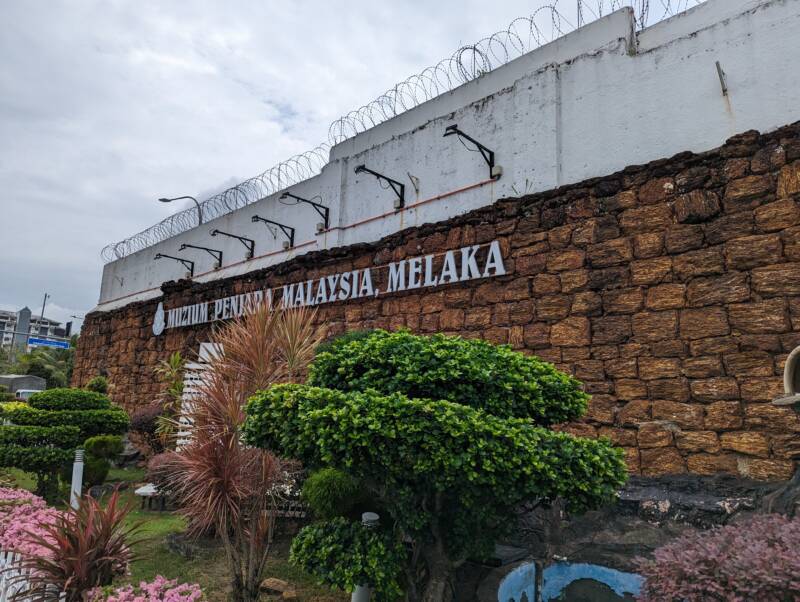
Every day I wandered through the streets around my apartment, and every day I passed the same imposing building. The prison museum, Melaka Prison Museum. After walking past those thick walls for a week, I felt a strange attraction. As a ‘community police officer’ for a prison in the Netherlands, I thought: “I must visit this prison in Melaka.”
That idea wouldn’t leave me alone.
A Step Across the Threshold
On a warm February afternoon, the day after I had successfully passed my exam, I walked resolutely toward the entrance of the Melaka Prison Museum. I had bought some fresh fruit from a street vendor along the way, and with the bag still in my hand, I presented myself at the reception.
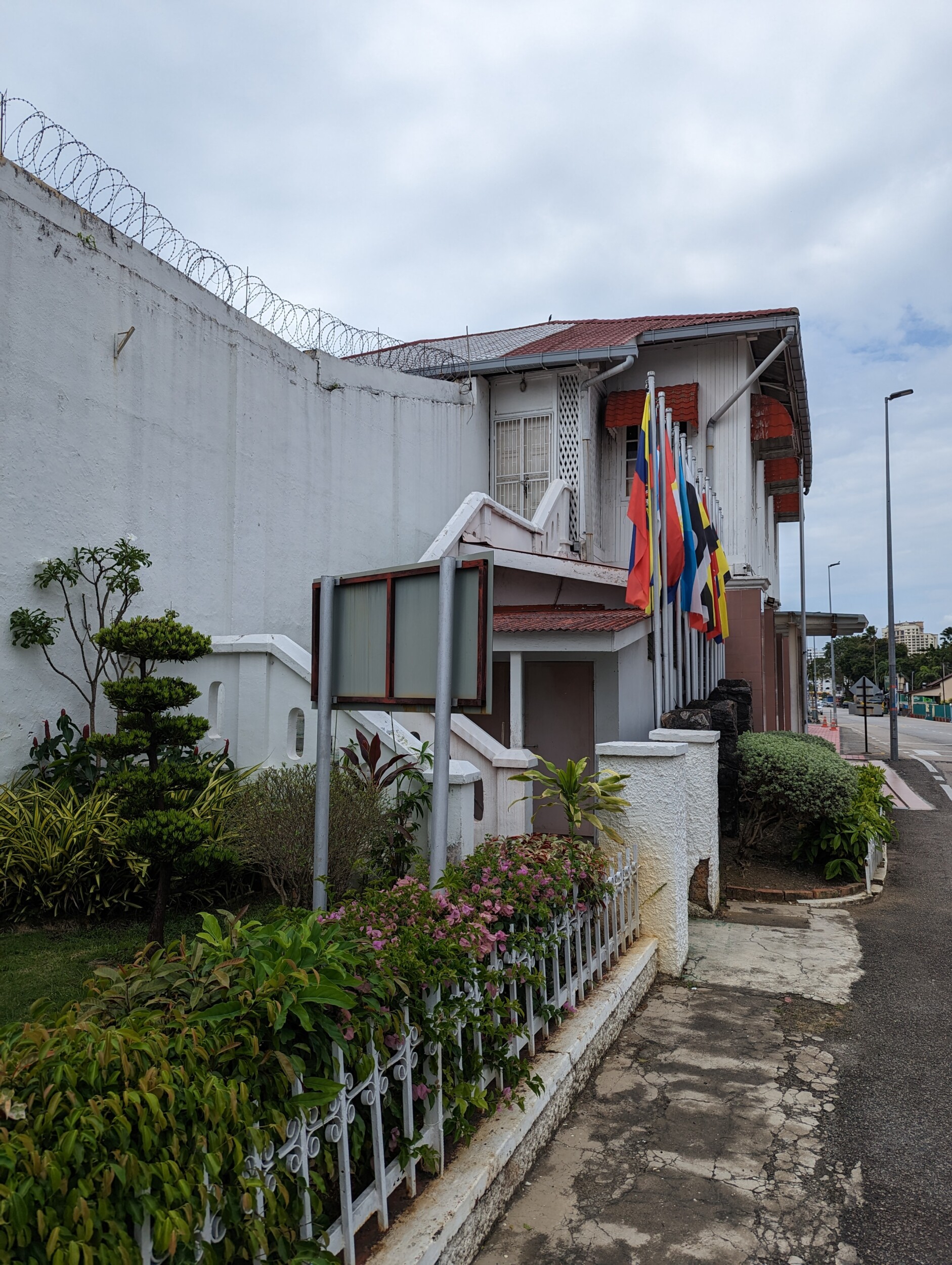
“10 Ringgit please,” said the man behind the glass with a friendly smile. As I paid, I asked if they could hold my fruit for me. The response surprised me. A thick iron door swung open with a heavy, penetrating sound. One of the guards stepped outside, fully dressed as a real prison warden, and took my bag of fruit. At that moment I realized: this place took itself seriously. You really get the feeling that you’re entering a prison, not just a museum.
Because that’s what it was, long ago. A real prison where real people spent their days behind these walls.
Within the Walls of Time
After paying, I was received by a second guard. His eyes lit up when he saw me, Western tourists were apparently not daily fare here. “How did you find this place?” he asked curiously in broken English. In our brief conversation, I told him I was a police officer. That immediately explained my interest, and he became visibly more enthusiastic. With care, he explained how I could best walk around to follow the journey of a convicted person through this building.
That route led me past fascinating relics from bygone times. Large, bulky cameras with which criminals were photographed. Measuring equipment to record physical characteristics. Stacks of paperwork, everything needed to reduce a person to a number, a file.
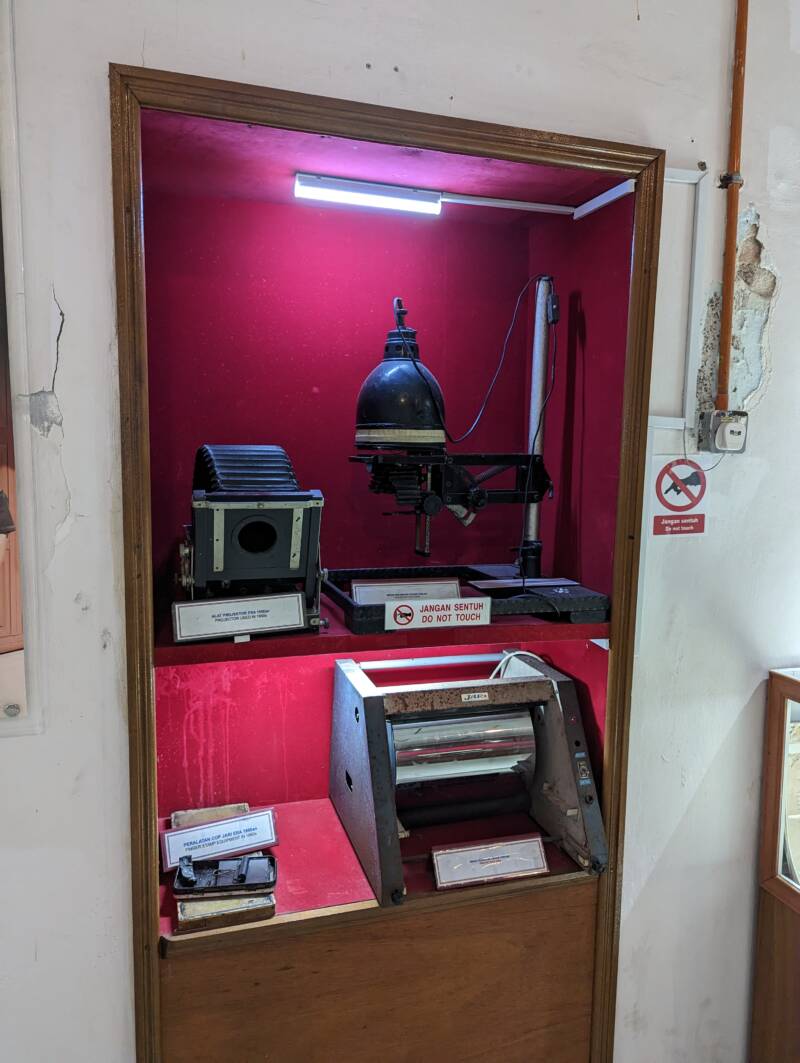
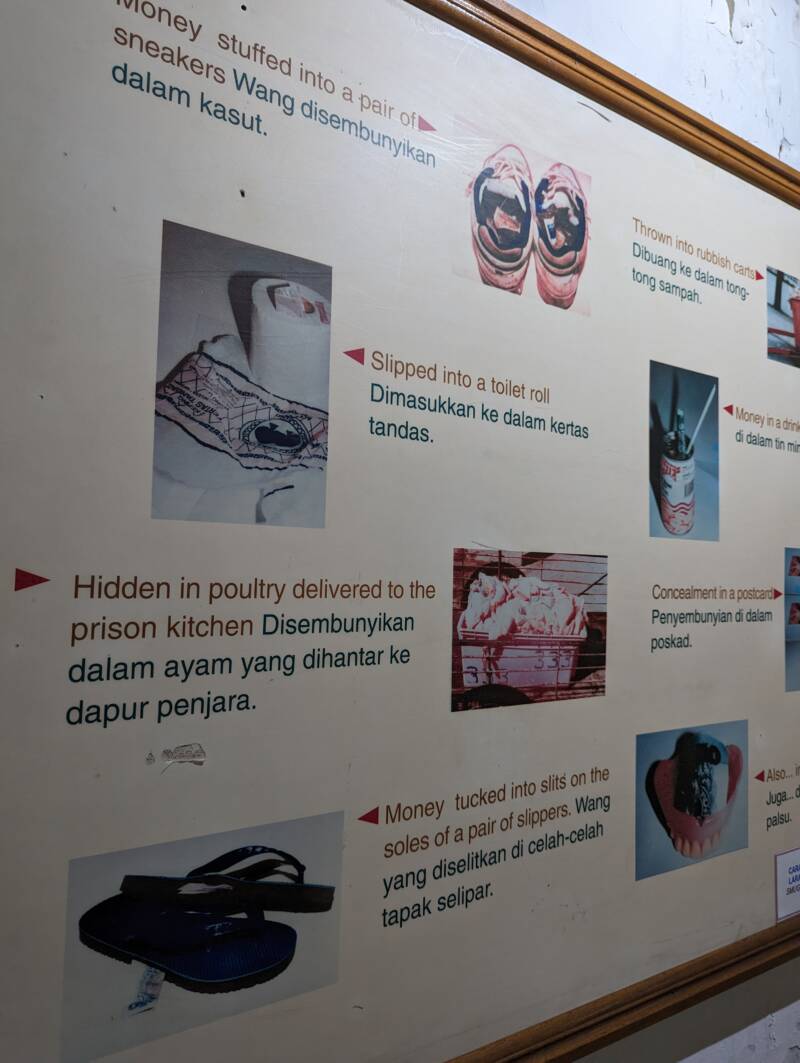
The Colors of Punishment
In the next room, various prison uniforms were displayed. Each uniform had its own color, each color represented a different punishment, a different offense. Blue for this, gray for that. It was as if the entire spectrum of human failings had been reduced to a color palette.
Then I came to a section that made me shiver, despite the tropical heat. Here they showed how prisoners tried to smuggle contraband inside. Hidden in shoes, sewn into clothing, concealed in food. And then… the most extreme form. A life-sized photo of a dissected corpse, in which the drug ‘pellets’ were clearly visible in the abdominal cavity.
This person hadn’t survived it.
You would never see such an explicit image in a museum in the Netherlands. Here it just hung there, as a matter-of-fact lesson in the consequences of desperation.
The Courtyard of Memories
Through a door I reached the courtyard, a small inner court surrounded by high walls where prisoners once took their daily walk. Around it lay the cells, the communal spaces, a large kitchen where meals were cooked daily for hundreds of prisoners, and a room dedicated to prayer.
Everywhere hung old black and white photos showing how life here had really been. Men behind bars, guards on watch, daily rituals of a closed world. The photos made the past tangible, brought voices back to these now silent spaces.
Slowly I climbed to the second floor of the Melaka Prison Museum, not knowing what awaited me.
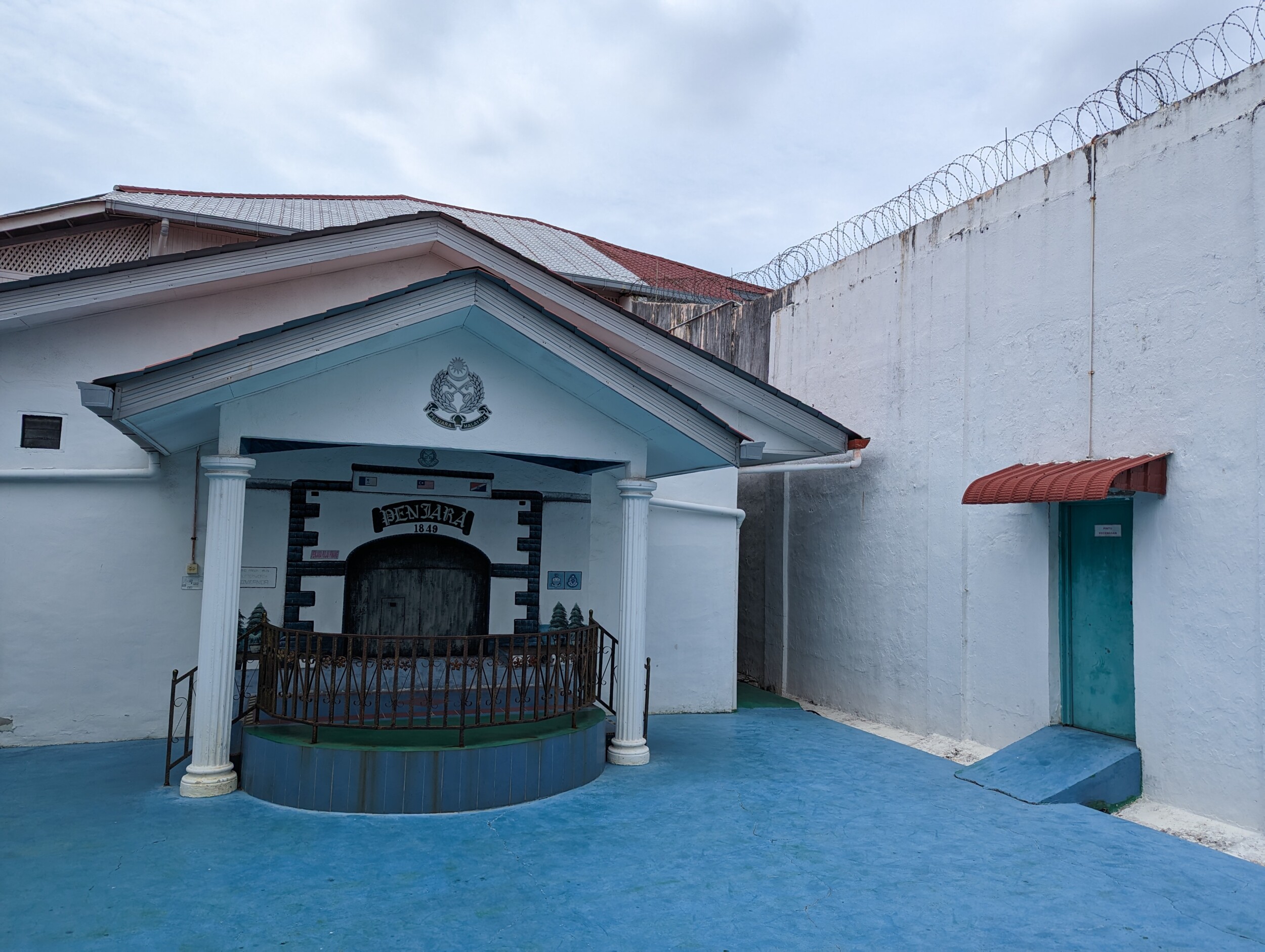
Confrontation with the Final Verdict
As a tourist, you don’t always reflect on the reality that punishments in some countries are harsher than where you come from. But when I arrived upstairs, that changed abruptly. I suddenly stood before the gallows.
The room where people were actually hanged. This punishment is still carried out in Malaysia. The trapdoor in the floor was still present, carefully maintained. Through that trapdoor, someone fell with a noose around their neck, somewhere between life and death, toward eternity.
It was bizarre to stand there. I knew that the death penalty was still carried out in various countries, but seeing the concrete reality… that touched me deeper than I had expected.
Two Worlds in Conversation
When I was back downstairs, the guard who had shown me around sought me out. We had gotten to know each other by now, he knew I worked for the Dutch police, I knew he seriously believed in the system he was part of.
“I find it strange that people are killed here,” I said carefully. He looked at me as if I had said something completely incomprehensible. “What should you do with murderers then?” he asked genuinely surprised.
“Is the person who carries out the punishment also a murderer then?” I asked back. He laughed: a warm, genuine laugh, but gave no answer.
“Do circumstances matter?” I continued. “Are there different degrees? Manslaughter, for example?” He couldn’t give me an answer to that. But he did ask a question that made me think: “What do you tell the victim’s mother when the perpetrator just walks the streets again?”
“What do you tell the mothers of the perpetrators who are also murdered by the state?” I responded.
Again that laugh. He had no answer for that.

The Core of the Difference
For this guard, it was simple: a person who had once committed this mortal sin was lost. Evil. Nothing could help anymore that would make such a person welcome in the community again. Death was the only solution. For me, shaped by a different system, different values, it was more complex. People can change. Circumstances play a role. Justice is more than retribution.
This discussion came at a perfect moment for me. I had just been studying how people come to certain thoughts. What shapes your values and norms? How do you form a well-considered opinion without becoming too normative?
Here my theory and reality met in the most direct way.
The Gentle Power of Understanding
Naturally, we didn’t come closer to each other in our convictions. But perhaps—and I sincerely hope so—he sometimes still thinks about our conversation. Maybe he can someday find some compassion for the way our system works.
I told him that some murderers with us also don’t go free, but that they receive treatment for the rest of their lives. That we believe in the possibility of change, of growth, of forgiveness.
He listened respectfully, though I saw doubt in his eyes.
Farewell from Two Worlds
With a warm laugh and a firm handshake, we said goodbye to each other. Two people from totally different cultures, with fundamentally different standards for how to deal with human failings and crime.
As I stepped back into the Malaysian sun, collected my fruit, and slowly walked back to my apartment, I thought about what I had experienced. About justice, about humanity, about the question of where forgiveness ends and punishment begins.
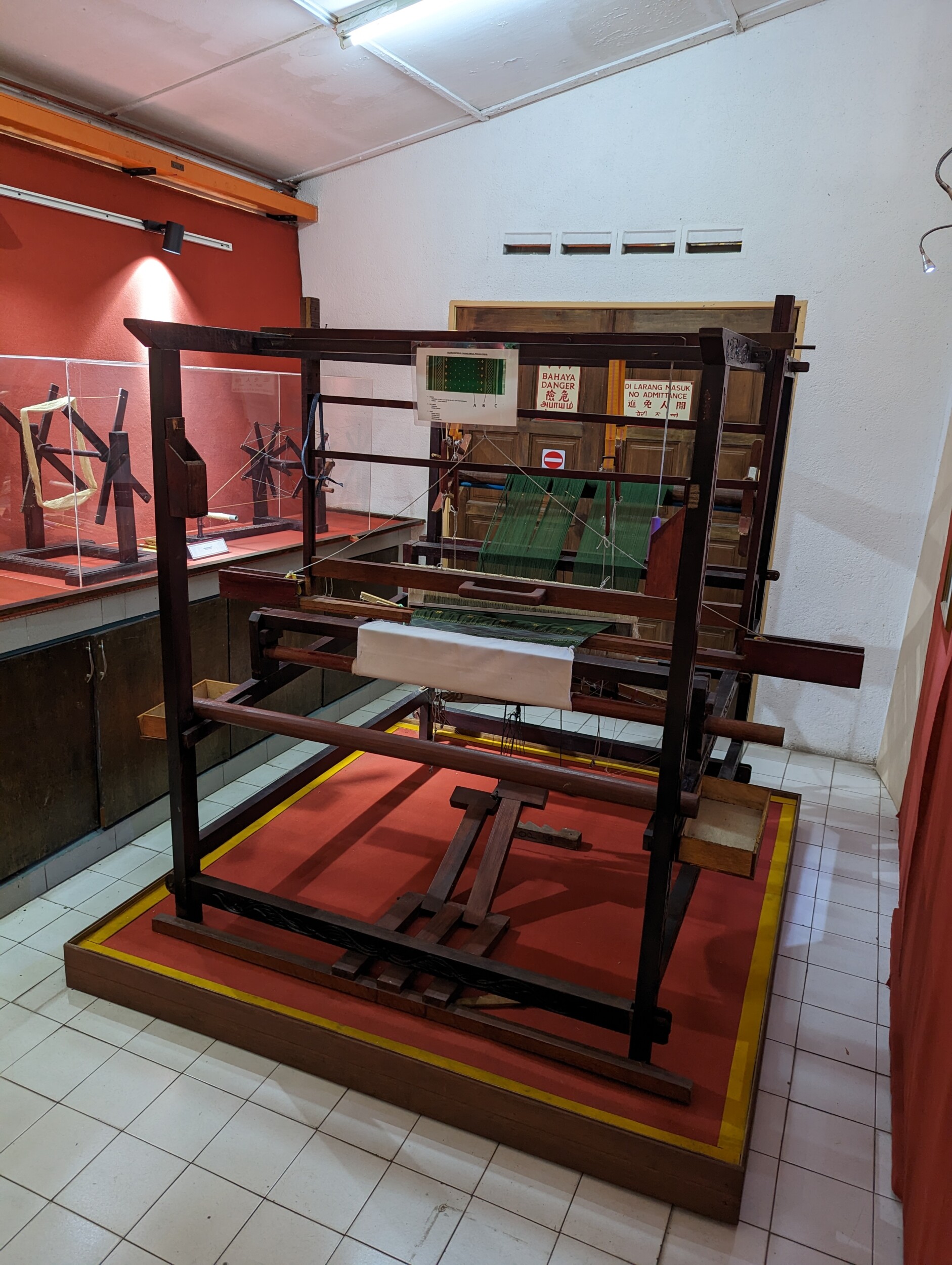
What This Taught Me
This encounter confronted me with the complexity of human justice. How differently can cultures look at the same question? What does it mean to do justice to both victims and perpetrators?
I realized how grateful I am to live in a country where we believe in second chances, in the power of rehabilitation, in the possibility that people can grow from their darkest moments.
But I also understood something of the pain and anger that leads to other choices. The despair of survivors crying out for justice. The need for definitive answers in a world full of gray areas.
Your Journey Through These Questions
Perhaps this story raises questions for you. About justice, about forgiveness, about the limits of human compassion. That’s good. These questions don’t have easy answers.
What would you have said to that guard? How do you view the balance between punishment and forgiveness? And how do we together shape a society that does justice to all involved—victims, perpetrators, and the community we live in?
This encounter at the Melaka Prison Museum reminded me why travel can be more than just seeing new places. Sometimes it confronts you with the deepest questions of what it means to be human.
And for that, however difficult, I am grateful.
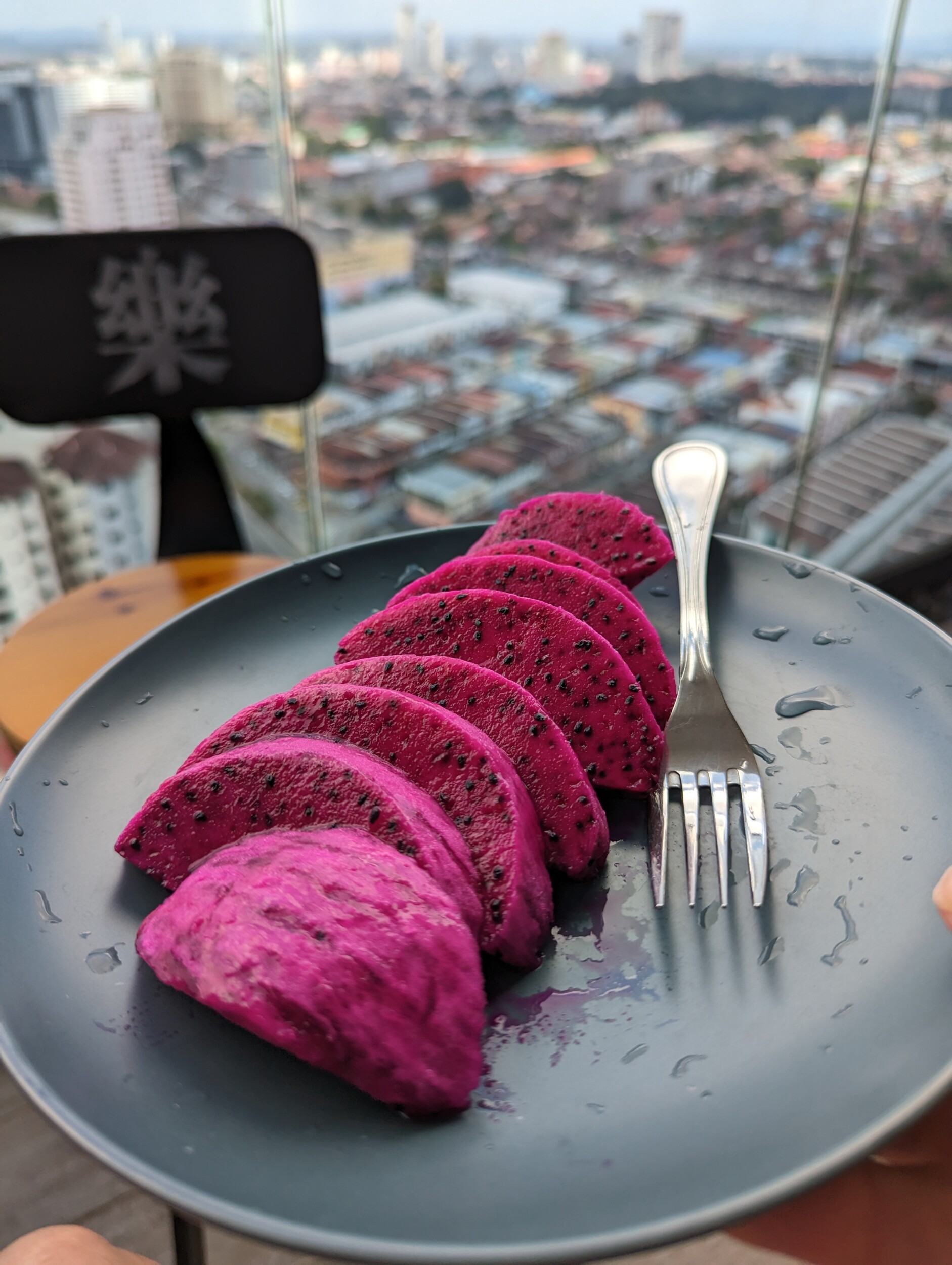
Visiting the Melaka Prison Museum Yourself
If this story has made you curious about visiting this special place, I completely understand. The museum is located about 2 kilometers from the busy tourist center of Melaka—about a half-hour walk from the famous Jonker Street or the Red Church. But that very walk makes the visit special; you walk through different neighborhoods and get a broader picture of the city.
If you’re walking to the Melaka Prison Museum, make sure to bring some water—in the Malaysian heat, that’s definitely needed. Or take a Grab (taxi app) if you’d rather not walk that far or want to save time.
The museum is usually open from 9:00 to 17:30, and the entrance fee was 10 Ringgit.
A tip from someone who’s been there: take your time. This isn’t a place to rush through. The stories behind the walls deserve your attention.
It can be emotionally confronting, especially the part about the death penalty. It’s a place that invites you to deep contemplation about justice and what it means to be human. But that’s exactly why it’s so valuable.
Have you ever been confronted with fundamentally different views on justice during your travels? How did you handle that? Let me know: I’m curious about your experiences with these complex questions.
